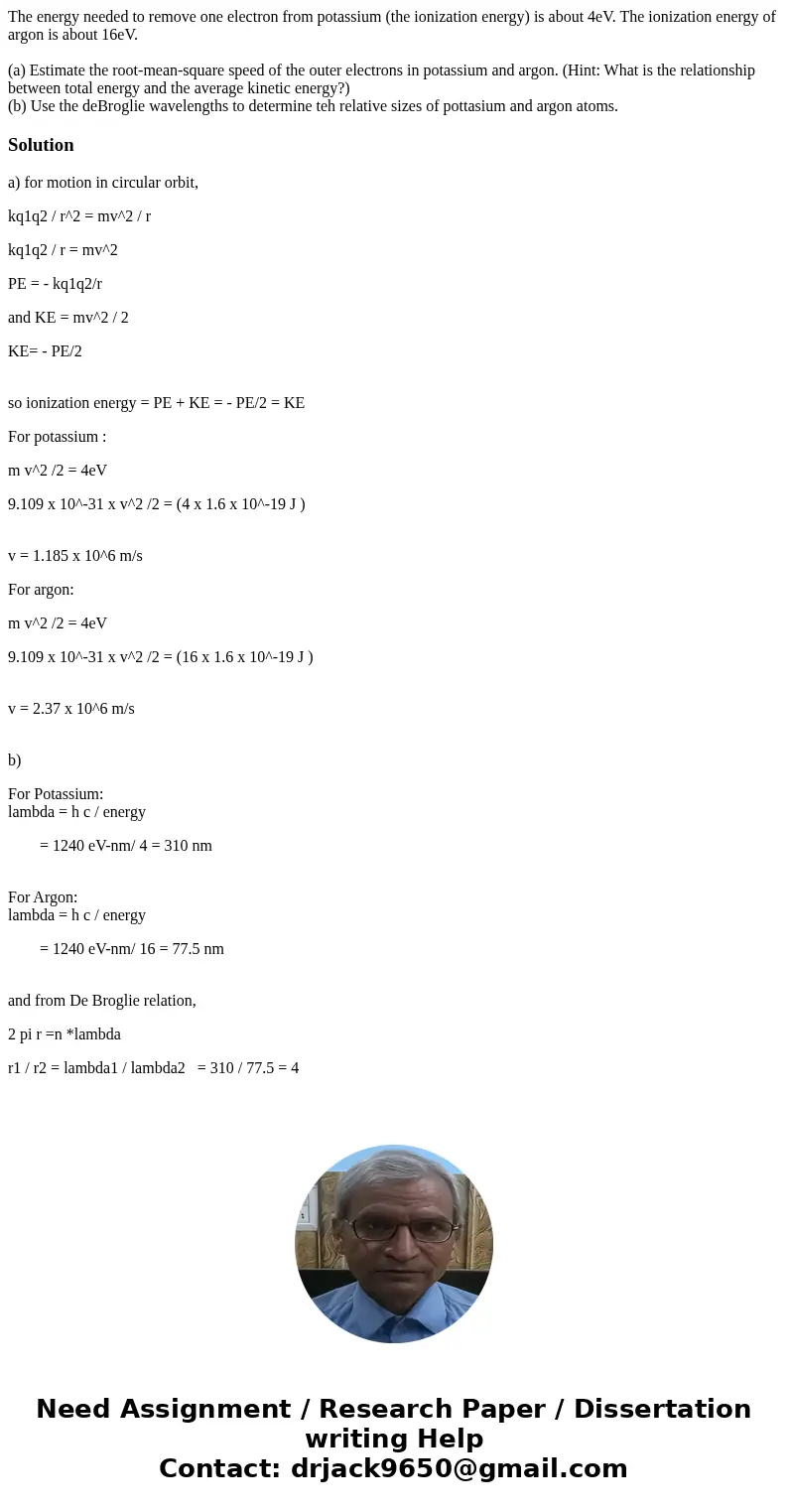The energy needed to remove one electron from potassium the
The energy needed to remove one electron from potassium (the ionization energy) is about 4eV. The ionization energy of argon is about 16eV.
(a) Estimate the root-mean-square speed of the outer electrons in potassium and argon. (Hint: What is the relationship between total energy and the average kinetic energy?)
(b) Use the deBroglie wavelengths to determine teh relative sizes of pottasium and argon atoms.
Solution
a) for motion in circular orbit,
kq1q2 / r^2 = mv^2 / r
kq1q2 / r = mv^2
PE = - kq1q2/r
and KE = mv^2 / 2
KE= - PE/2
so ionization energy = PE + KE = - PE/2 = KE
For potassium :
m v^2 /2 = 4eV
9.109 x 10^-31 x v^2 /2 = (4 x 1.6 x 10^-19 J )
v = 1.185 x 10^6 m/s
For argon:
m v^2 /2 = 4eV
9.109 x 10^-31 x v^2 /2 = (16 x 1.6 x 10^-19 J )
v = 2.37 x 10^6 m/s
b)
For Potassium:
lambda = h c / energy
= 1240 eV-nm/ 4 = 310 nm
For Argon:
lambda = h c / energy
= 1240 eV-nm/ 16 = 77.5 nm
and from De Broglie relation,
2 pi r =n *lambda
r1 / r2 = lambda1 / lambda2 = 310 / 77.5 = 4

 Homework Sourse
Homework Sourse